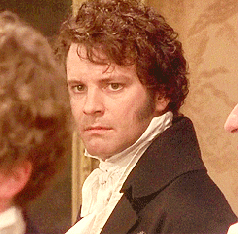Writing a modern adaptation of a beloved classic novel sounds like a very daunting undertaking. Over the years, I’ve read my fair share of modernized classics. While some of them failed to impress me, I still support the concept as a way to make the original’s themes accessible in new and inventive ways. Originally published in 2011, When She Woke by Hillary Jordan largely accomplishes this with her science fiction update on The Scarlet Letter by Nathaniel Hawthorne. While I didn’t think that everything about Jordan’s novel works, I did find it to be a fascinating, and at times, a frighteningly plausible reality in its exploration of extreme conservatism. While I think Jordan managed to give Hawthorne’s themes a contemporary spin, I found this work had even stronger echoes of Orwell’s dystopian nightmare world of 1984. At its heart, this is the personal journey of a weak and vulnerable girl who transforms into a strong and fierce woman.
Jordan’s recreation of The Scarlet Letter imagines a United States that has overturned Roe v. Wade (remember this was written over a decade ago). Christian fundamentalism has blurred the lines of church and state to the point that the Presidential cabinet includes the position of Secretary of Faith. Vigilante groups seek out and eliminate those that rise up against the new regime, while the government turns a blind eye. Our protagonist Hannah Payne awakens in a holding cell following her conviction of murder, having had an illegal abortion. Criminals are no longer placing an economic strain by way of incarceration; instead offenders are put through a process known as “melachroming.” They are injected with a virus that changes the color of their skin to signify their crime to society. Yellows are for misdemeanors, blues for child molestations, greens for crimes like arson or robbery, and reds for murderers. Chromes are released back into society where they are immediately shunned and subjected to bullying, assault, rape, and even death.
“When she woke, she was red. Not flushed, not sunburned, but the solid, declarative red of a stop sign.”
The novel begins with Hannah waking up in a holding cell after her chroming process, where she feels terrified. Her mother refuses to acknowledge her, while her father and sister attempt to offer what support they can. While Hannah chose to have this abortion, she continues to desperately love the man who impregnated her, Arthur Dale, a powerful Christian leader who has just been elected as the next Secretary of Faith to the White House. Hannah loved Arthur so much; she refuses to name him in order to protect his identity. Through flashbacks, we learn of their relationship as well as Arthur Dale’s status as an icon of hope for millions, as well as a happily married family man. Utterly alone, marked for her crime for all to see, Hannah must struggle to find the will to carry on, to protect the ones she loves, and to fight for her basic right to live and be free.
When She Woke is only the second novel from Hillary Jordan, and it’s one that deserves great praise. The formidable task of expanding on Nathaniel Hawthorne’s masterpiece sounds like a potential disaster, but Jordan manages to not only use The Scarlet Letter as inspiration, but also use Hawthorne to create her own contemporary, politically charged social commentary. While there are some extreme deviations from the original’s structure, such as Dale being the married one and Pearl never coming into existence, When She Woke channels the spirit of the classic that made Hester Prynne such a deep psychological character. After an attempt at being “reformed” in a Christian home for women, Hannah ventures out into the unforgiving world as a social pariah. Hannah’s scarlet “A” cannot be removed, as her body has been sentenced to remain chromed. Of all the themes and plots in this book, it is Hannah’s path to self-discovery that resonated the most with me. She is passionate and headstrong in her youth, but the book isn’t afraid to explore her failings. Throughout the novel, she continues to pine for Arthur Dale, believing him to be her true love. Her character arc is so compelling because we get to see her strength grow as an independent woman. As Hannah matures, her love for herself increases and her love for Dale diminishes. She rises from being a broken woman into someone with the courage to follow her convictions in a broken world.
However, this work isn’t without its share of problems for me. The Scarlet Letter is compelling in its equal exploration into the character of Dimmesdale and his psychological torture at the hands of Roger Chillingworth. Jordan’s reinvention doesn’t offer these insights into the character, so he comes across as unsympathetic. While her crime was having an abortion, Hannah’s daughter “Pearl” does appear in the novel, in a rather disturbing scene. I loved how the world of this novel was revealed in subtle ways, such as radio broadcasts and background scenes. However, the second half of the novel, when Hannah becomes a member of a rebel group, feels slightly weaker than the first half, as it becomes more of an action thriller.
From a dystopian standpoint, Jordan’s future America is frightening in its plausibility, for those who would fight for reproductive freedom and the rights of a woman to her own body are considered heretics and terrorists. With its biting political and social commentary, When She Woke is a thrilling critique on extreme conservatism, religion, and sexuality.










